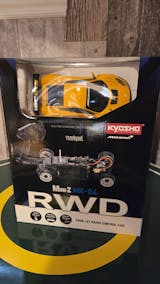In the shadowy garages of Japan’s underground racing scene, a Frankenstein creation emerged in the late 1980s—a car stitched together from two Nissan legends, the Silvia and the 180SX. This hybrid, dubbed the Sileighty (or Sil80), started as a pragmatic fix for cash-strapped racers but grew into a cultural force that redefined drifting. Here’s how a DIY project became an automotive icon.
The Problem That Sparked Innovation

The 180SX, with its sleek pop-up headlights, was a favorite among drifters—until they crashed. Repairing the intricate front end was expensive and time-consuming. Street racers needed a cheaper, simpler solution. Their answer? Swapping the damaged 180SX front end with the boxy, fixed-headlight design of the Nissan Silvia.

Why the Silvia?
-
Cost: Silvia parts were cheaper and easier to source.
-
Weight: The swap shaved off excess weight, improving balance.
-
Durability: Fixed headlights meant fewer mechanical failures.
The result? A car with a Silvia front and 180SX rear—unofficially nicknamed “Sil80” by enthusiasts. It wasn’t just functional; its aggressive, mismatched look became a badge of honor in drifting circles.

From Back-Alley Builds to Showroom Legitimacy
The Sil80’s underground fame caught the eye of Kids-Heart, a tuning shop led by Takayama San. In 1998, they partnered with Nissan dealerships to produce 500 “official” Sileighties, legitimizing the racer’s hack.
What Set the Kids-Heart Sileighty Apart?
-
Badging: Unique “Sileighty” logos on the rear plate and windows.
-
Engineering Upgrades:
-
Turbo Tuning: The Garrett T25G turbocharger’s boost jumped from 7 psi to 13 psi.
-
Power Boost: Output climbed to 230 bhp, trumping the Silvia’s 205 bhp and the 180SX’s 175 bhp.
-
Suspension & LSD: Retuned for sharper cornering and traction.
-
Transmission: A 5-speed manual or 4-speed auto propelled it to 100 km/h in 6.0 seconds.
-
These weren’t slapped-together mods. Kids-Heart’s version had factory-level polish—no zip ties or jury-rigged parts.


The Sil80’s Double Life: Street Cred Meets Mainstream Fame
While the Sileighty ruled mountain passes and drift circuits, it also infiltrated pop culture. It became a pixelated star in games like Gran Turismo, where players could unlock it through challenges. Anime series and manga often featured the Sil80, cementing its status as a symbol of Japan’s car culture.
Why Did It Resonate?
-
Underdog Roots: Born from necessity, not corporate design boards.
-
Visual Contrast: The Silvia’s angular front clashed with the 180SX’s curvy rear, creating a striking, rebellious aesthetic.
-
Performance Pedigree: Its rear-wheel-drive setup and turbocharged engine made it a drift machine.

The Legacy: Why the Sileighty Still Matters
The Sileighty’s story is a testament to grassroots ingenuity. It blurred the line between factory and aftermarket, proving that innovation often starts outside corporate labs. Even today, Sil80 replicas populate drift events, and the Kids-Heart models are collector’s items.
Final Thought:
The Sileighty isn’t just a car—it’s a philosophy. It represents the spirit of resourcefulness, the thrill of bending rules, and the raw creativity that fuels car culture. Whether you’re sliding through a hairpin or pixel-drifting in a game, the Sil80 remains a reminder that sometimes, the best ideas come from the streets.














